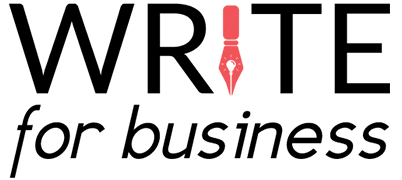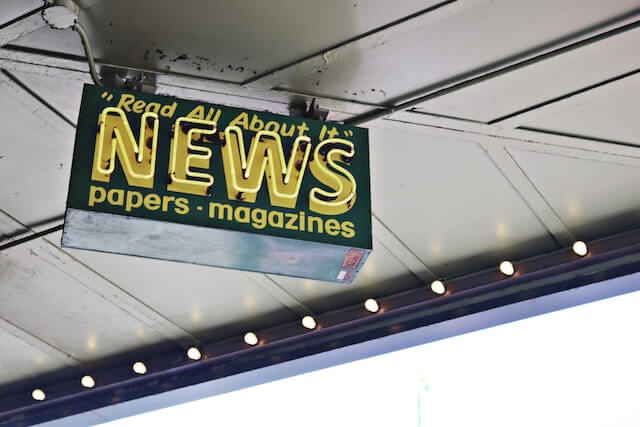How to Write Press Releases: 11 Best Practices [with examples]
By Helen McCrone, SEO Copywriter and Content Writer | 1,462 words
The best press releases strike a balance between interesting news content and commercial intent. They have to be persuasive, they must be free of hype and jargon, and they need to convince the editor that they're worth publishing. What they can't be is a naked sales pitch. That's why it's so important to use best copywriting practices.
Below are 11 tips on how to write a professional press release. These are followed by some real-world examples for you to study.
1. Write something that’s newsworthy to your audience
By newsworthy, I mean interesting and relevant. Put yourself in the shoes of the target audience. Will they really care about your new Wellness at Work program for staff? Possibly, if they’re HR Managers who are thinking of introducing something similar to their own company and you can prove mental health benefits among employees. Otherwise, keep this ‘news’ for your internal newsletter and annual report to shareholders.
2. Write a headline that is eye-catching and interesting
Lengthy, boring or vague headlines do not encourage people to read your press releases. I love this example by Susan Guillory writing for Cision: “Flell Inc. Launches Industry Forum”. If you’ve never heard of Flell Inc, you won’t know their industry. Plus, what’s the purpose of the forum? Much better to write: “Flell Inc. Launches Acupuncture Practitioners’ Forum to Foster Communication”. Now you have my interest.
3. Send editors news that matches the focus of their publication
You may be excited that your business is sponsoring the annual Rhythm ‘n’ Ribs event in your local town, but it won’t impress the editor of a national business magazine. Likewise, a news platform that focuses on cutting-edge technology is not going to be interested in the grand opening of your sixth yoga studio. Always understand the type of content that each editor is looking for before you make a submission.
4. Use the correct press release format required by editors
Format is super important when it comes to press releases. Editors are busy people and they won’t thank you for having to rewrite your article’s title, add a sub-headline, or simply work out if your news is something they want to cover. The harder you make it for them, the more likely there are to ignore it altogether. Show them you’re a pro by employing the layout they expect. Not sure what that is? Here’s the right press release format.
5. Apply the journalistic method of the ‘inverted pyramid’
The inverted pyramid structure may have its roots in the old-fashioned telegraph, but the principle of putting your story’s most important part at the top still makes sense for press releases. First, using the 5 Ws of journalism (Who, What, When, Where, and Why) is a great way to draw attention. Second, if editors decide to crop your article because it’s too lengthy, they won’t be cutting off any essential information.
6. Adopt the right style of press release for the topic
Several types of press releases exist, from events and reports to product launches and new hires. Each one adopts a slightly different tone of voice. Compare the humble and objective awards press release with the reassuring and optimistic takeover press release. And before blasting out the exact same message to every publication on your list, check their style. Is it formal, neutral or conversational? Adjust where necessary.
7. Make the content sound like news and not an advert
Editors do not like ads rewritten as press releases. After all, they’re not in the business of free advertising. So, ensure your copy uses journalistic language. In other words, rely on facts and evidence, not opinions and emotions. Write short sentences and paragraphs, use the active voice, and avoid hyped-up words like ‘cutting-edge’, ‘revolutionary’ and ‘disruptive’. As advised in The Elements of Copywriting: play down any sales aspects, play up the news aspects.
8. Avoid mistakes with grammar, spelling and punctuation
A press release is no time to be sloppy with your writing. Grammar, spelling and punctuation errors will not impress editors, so check carefully before you hit ‘send’. There is little excuse these days, what with the plethora of writing and editing tools out there, like Microsoft Word and Grammarly. If you’re not confident about your own writing skills, get someone competent to check your work first.
9. Incorporate quotations to add interest and credibility
Readers like quotations in press releases, and so do editors. Why? Because they add a sense of believability. Quotes from relevant people not only support your story but also make it much less dull. Ensure each quote does actually add more information and doesn’t simply rehash a previous sentence or paragraph. That’s what we call padding. Finally, always use quotation marks and make it clear who is doing the speaking.
10. Use multimedia assets to increase reader engagement
By all means offer high-resolution images with captions if they’re relevant and you have the copyright. Avoid sending them as attachments though (editors hate them). Use a transfer service or your own newsroom instead. Consider also embedding video and audio within the copy to create a multimedia press release. This can boost engagement and shareability but do check the publication’s multimedia and formatting guidelines first.
11. Include keyword phrases to support your SEO efforts
Press releases will not have a direct impact on your SEO. Why? Because newswire sites use no-follow links to avoid spam abuse. Having said that, a well-written, interesting press release helps SEO indirectly by generating interest in your brand. In turn, readers will (hopefully) check out your website or share your news on social media, increasing traffic and earning you quality links. Therefore, add key search terms to your title and copy.

6 Examples of Real Press Releases
Now let's take a look at some actual press releases. Each one shows one or more best practices being followed - or not, as the case may be!
1. The newsworthy press release
Technology giant Apple provides a great example of a press release that contains real news. In "Apple expands Self Service Repair to Mac notebooks", the company announces how genuine Apple parts and tools can be purchased by US customers from August 23. Such relevant news is bound to shared among consumers, and bloggers will no doubt make their thoughts known about this latest service.
2. The good format-dull headline press release
Press releases are often used to announce the publication of a company's latest survey or report. "TravelBoom Releases 2022 Leisure Travel Trends Study" uses the inverted pyramid structure, includes a quote from the COO, and closes with a call to action. It even uses bullet points to highlight key insights. However, the title could be a little more eye-catching. Maybe "TravelBoom 2022 Survey Reveals Startling Trends Among Leisure Travelers".
3. The humble awards press release
"The Mom’s Choice Awards Names Ardo Among the Best in Family-Friendly Products" is a nice example of how to strike the right tone. The intro is concise, the body copy explains the selection criteria, and the quote from the Executive Director of the Mom’s Choice Awards adds credibility. Note modest phrases such as "is honored to announce" and "we are thrilled". Note too that the product description does not include overblown adjectives.
4. The less-than-formal press release
Think all press releases have to use a formal register? Not so. Look at "Serial Entrepreneur Gallant Dill Acquires USANews.com to Launch His Own Media Empire". It has achieved a more conversational tone by using phrases like "a staggering amount of money" and informal grammatical structures like "How USANews.com plans on being different is by...". This style suits the young award-winning entrepreneur Gallant Dill nicely.
5. The naked sales pitch press release
Want to see an example of a "salesy" press release? Then check out "Terra Fresh Home & Garden Announce 6-Month 100% Money Back Guarantee". The headline was eye-catching enough to make me click. However, as I read the content, I soon realized it was nothing but a promo. Worse still, it didn't even provide me with essential information on the money-back guarantee. All I got was a random selection of text copy-pasted from the company's website. This is not the way to write a press release.
6. The multimedia press release
This last example from Spotify shows how you can combine a traditional structure with multimedia to create a press release that engages editors and audiences alike. "Spotify Mobilizes Fans, Artists, and Our ‘Music For Ukraine’ Playlist Ahead of Ukrainian Independence Day" includes a photo, an interactive playlist, and a video by Ukrainian President Volodymyr Zelenskyy no less. It has a few too many links for my liking, but overall the effect is terrific.
Do you write your own press releases or do you use a press release writing service? Share your experiences below in the comments section. Or maybe you have a few tips of your own!


